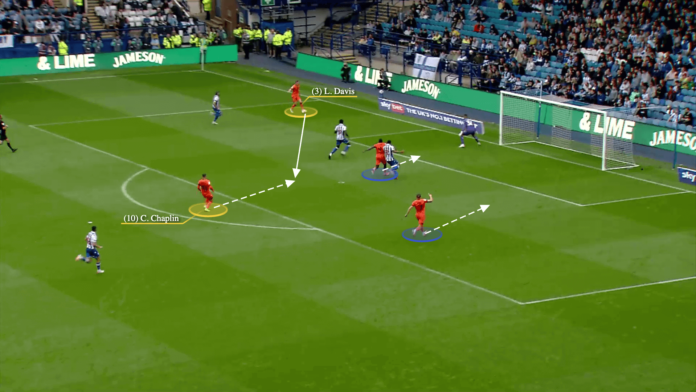“I don’t think it’s a surprise, but we didn’t set out with that goal. We just set out to be as good as we can possibly be.”
Kieran McKenna was reflecting on Ipswich Town’s back-to-back promotion to the Premier League on an open-top bus parade, celebrating a feat only four teams have managed since the inception of the Premier League in 1992.
Ipswich followed Watford (1997-99), Manchester City (1998-00), Norwich City (2009-11) and Southampton (2010-12) to become the fifth team in the Premier League era to manage back-to-back promotions from the third tier to the top flight.
George Edmundson leads Ipswich’s promotion celebrations (Stephen Pond/Getty Images)
With a positive and brave style of play, they finished second in the Championship behind Leicester City, securing an automatic spot in the 2024-25 Premier League season after 22 years in the lower divisions.
“We want to play out from the back and build up through the thirds of the pitch,” Ipswich midfielder Massimo Luongo told The Athletic last October. “I wouldn’t say we’re a possession-based team — we want to get through the pitch quickly, but we have multiple ways of doing it. We can go over top, down the sides or sometimes exploit through the pitch.”
Playing out of a 4-2-3-1, McKenna’s team has obvious traits on and off the ball. A common feature of Ipswich’s in-possession game is the left-winger moving infield as a second No 10.
Last season, Marcus Harness, Omari Hutchinson and Nathan Broadhead featured in that role, which allowed left-back Leif Davis to advance down the wing and attacking midfielder Conor Chaplin to support the right flank in the build-up phase.
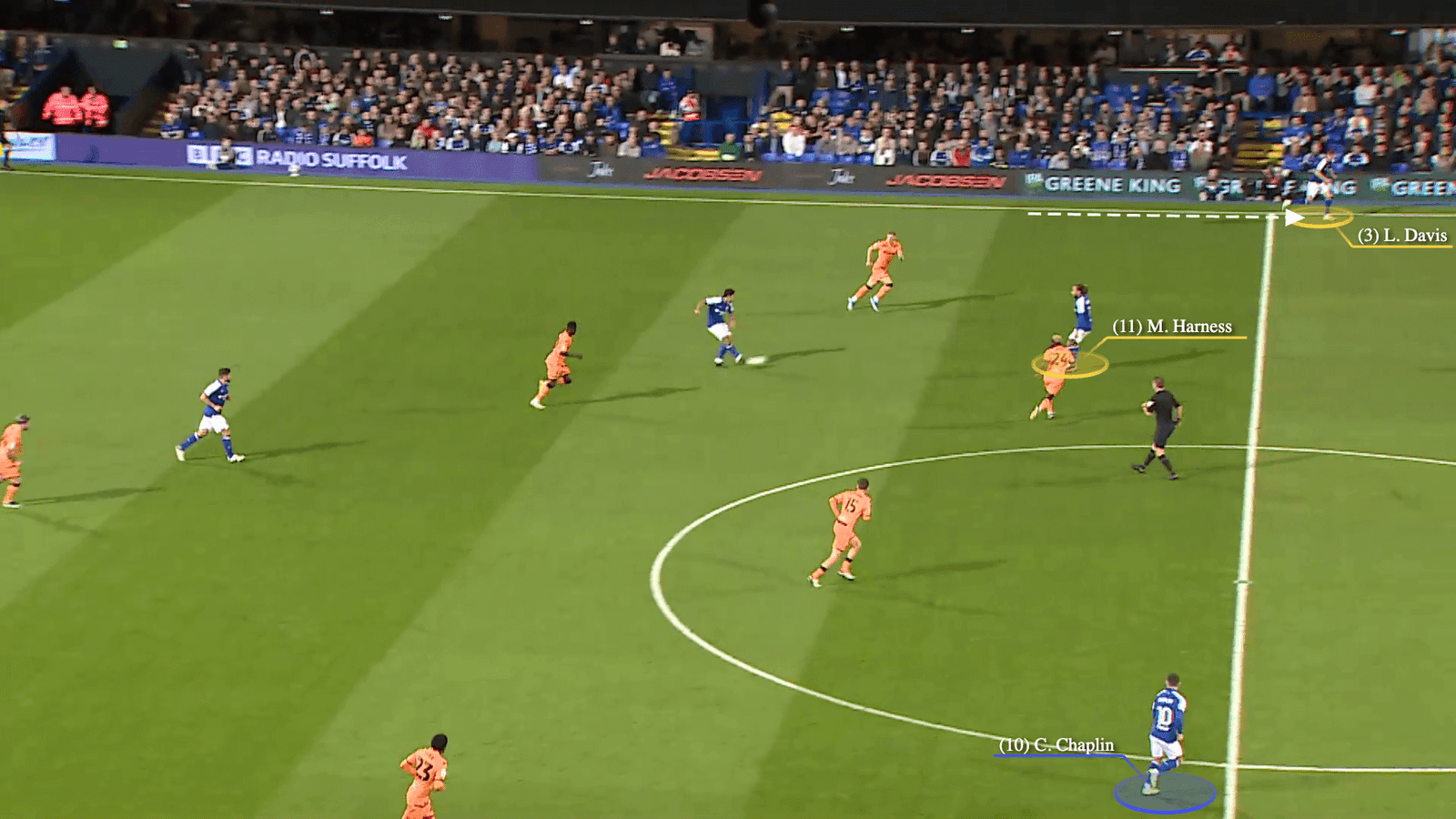
Depending on how far Davis pushes up the left side of the pitch, Ipswich’s shape on the ball shifts between a 3-2-4-1 and an asymmetrical 4-2-3-1 as he times his movement to help break down the opposition.
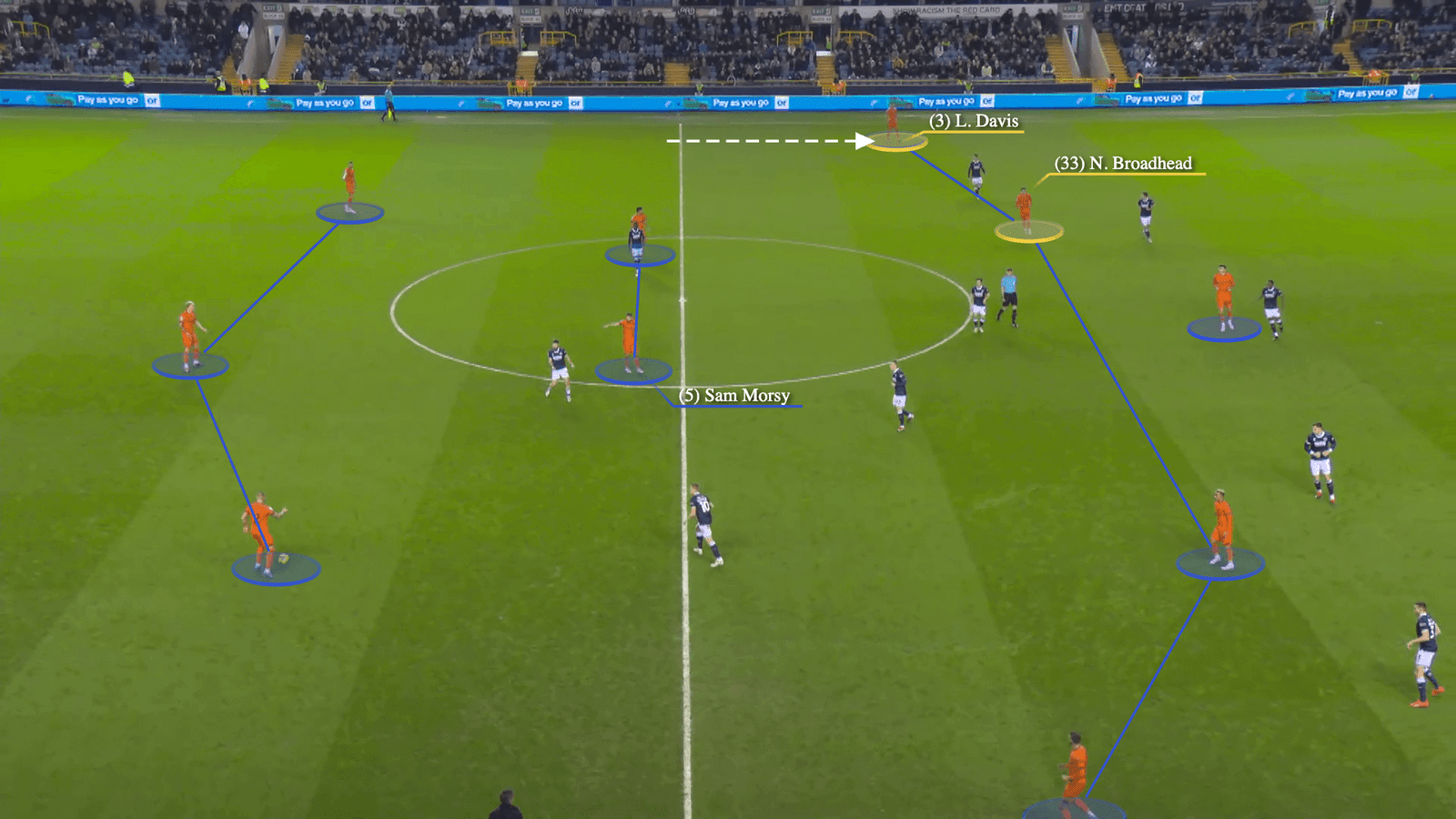
Ipswich mainly progress the ball through the centre of the pitch, either by finding Chaplin, the narrow left-winger or combining with the centre-forward to reach them in a position between the lines.
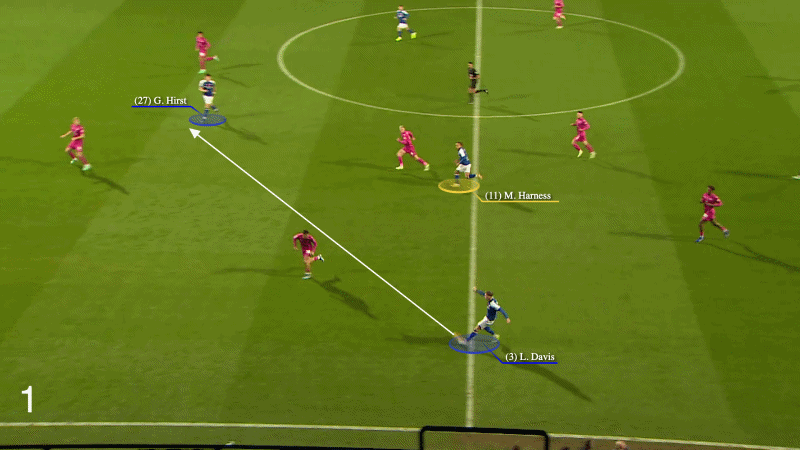
In this example, away to Middlesbrough last December, Luke Woolfenden plays a line-splitting pass into the dropping George Hirst, with the left-winger, Hutchinson, occupying a narrow position in midfield.

Hirst’s movement and backheel towards the right side is the trigger for Hutchinson to attack the space behind an unorganised defensive line. Chaplin spots the opportunity and moves towards the ball…

… to find Hutchinson’s run behind the defence, before the left-winger scores to double Ipswich’s lead.

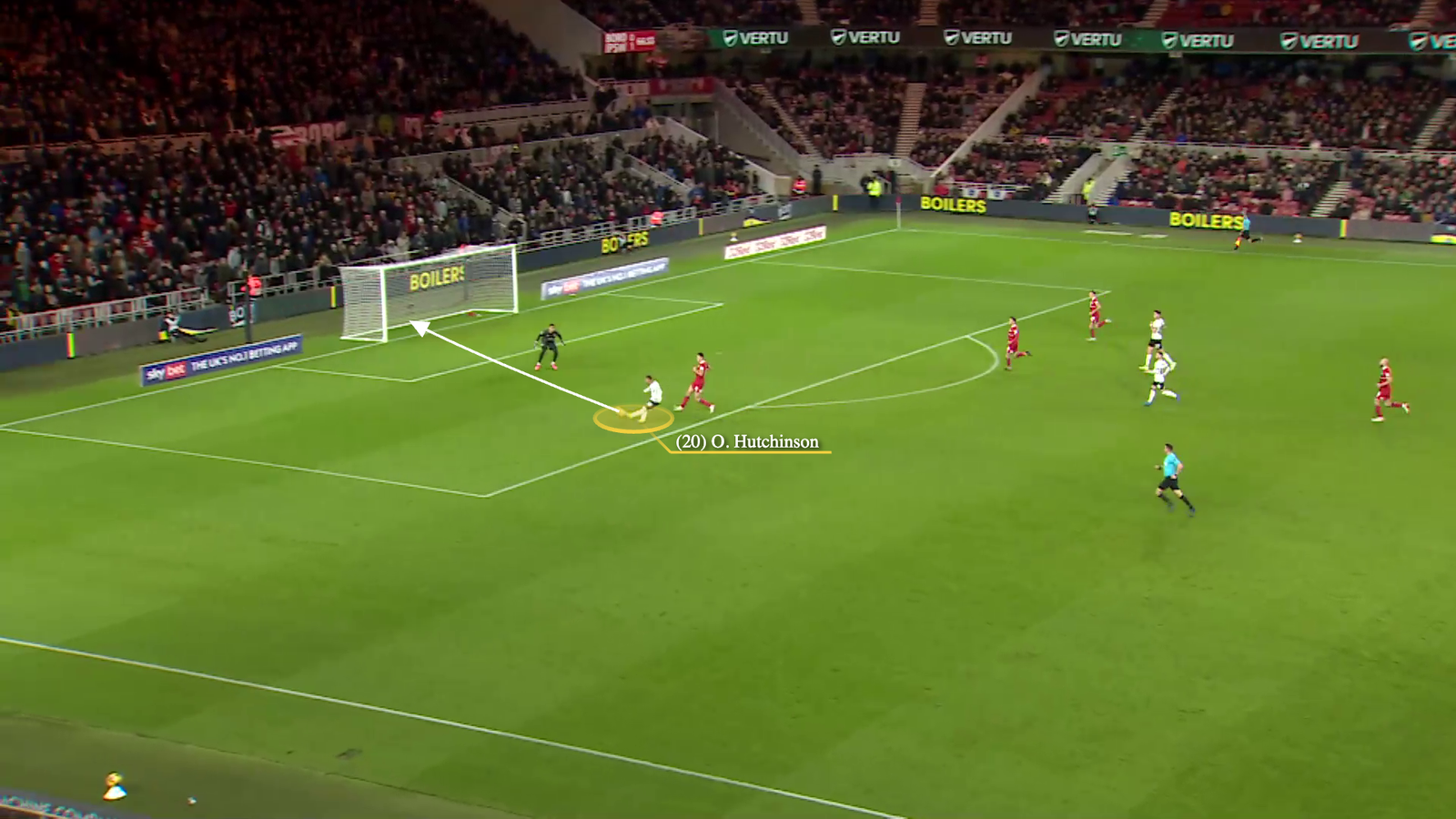
Another option to progress the ball is when Chaplin roams towards the right wing. The in-field positioning of whoever is fulfilling the left-winger role means Ipswich can still have a player to attack the spaces between the lines when Chaplin moves towards the touchline to support the build-up.

Chaplin’s winner against Blackburn Rovers last March starts with him moving towards the right half-space…

… and offering himself as a passing option to Ipswich’s right-back, Axel Tuanzebe, to progress the ball. Blackburn’s left-back can’t move up towards the Ipswich midfielder because of Hutchinson’s positioning down the right wing, which allows Chaplin time until his midfield counterpart arrives.
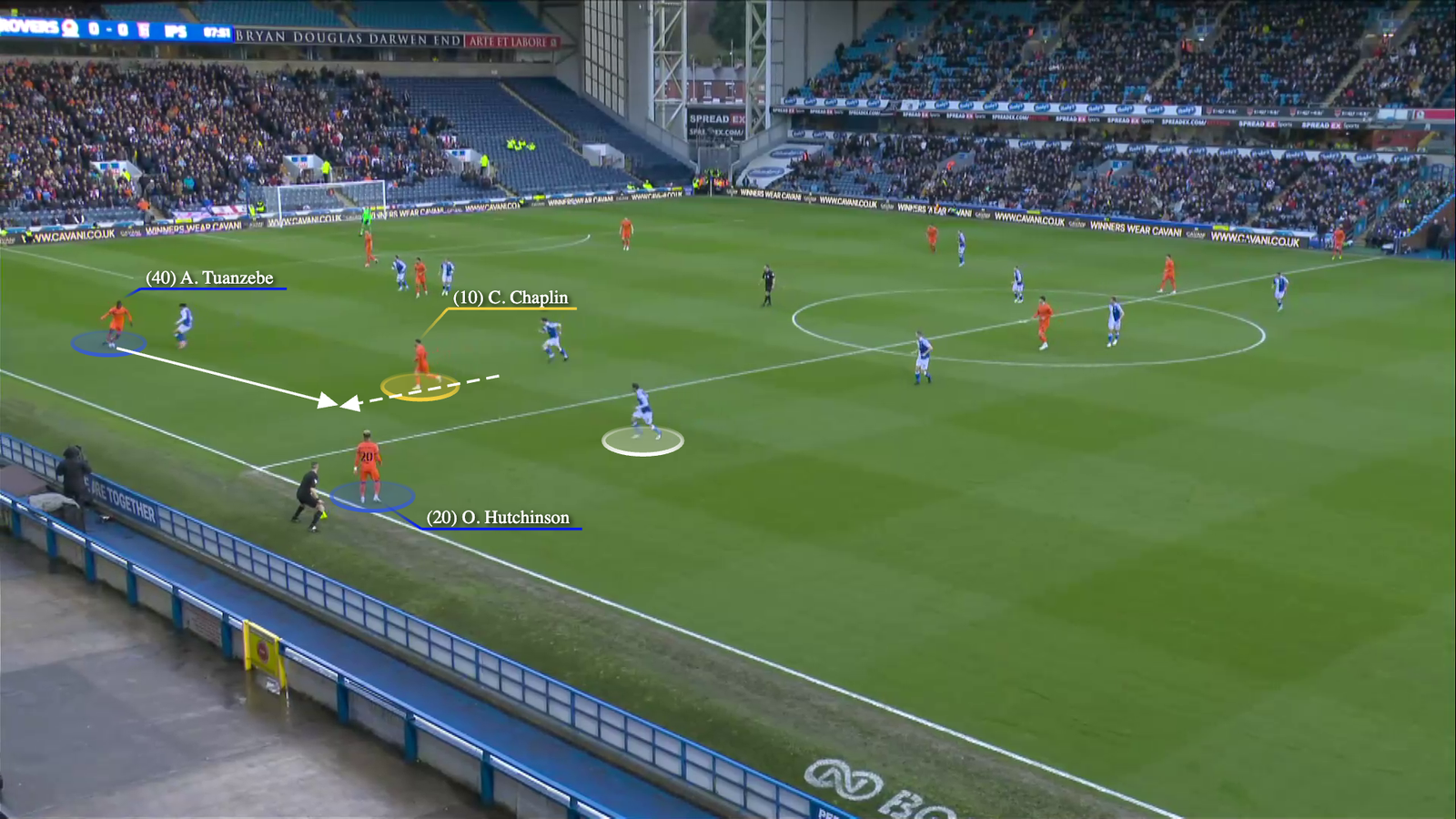
Ipswich’s No 10 lets the ball roll across him, using his body to shield it and controls it with his far left foot, before dribbling forward…

… and finding Davis’ run down the left wing. Broadhead’s narrow position plays a role in this attack too.
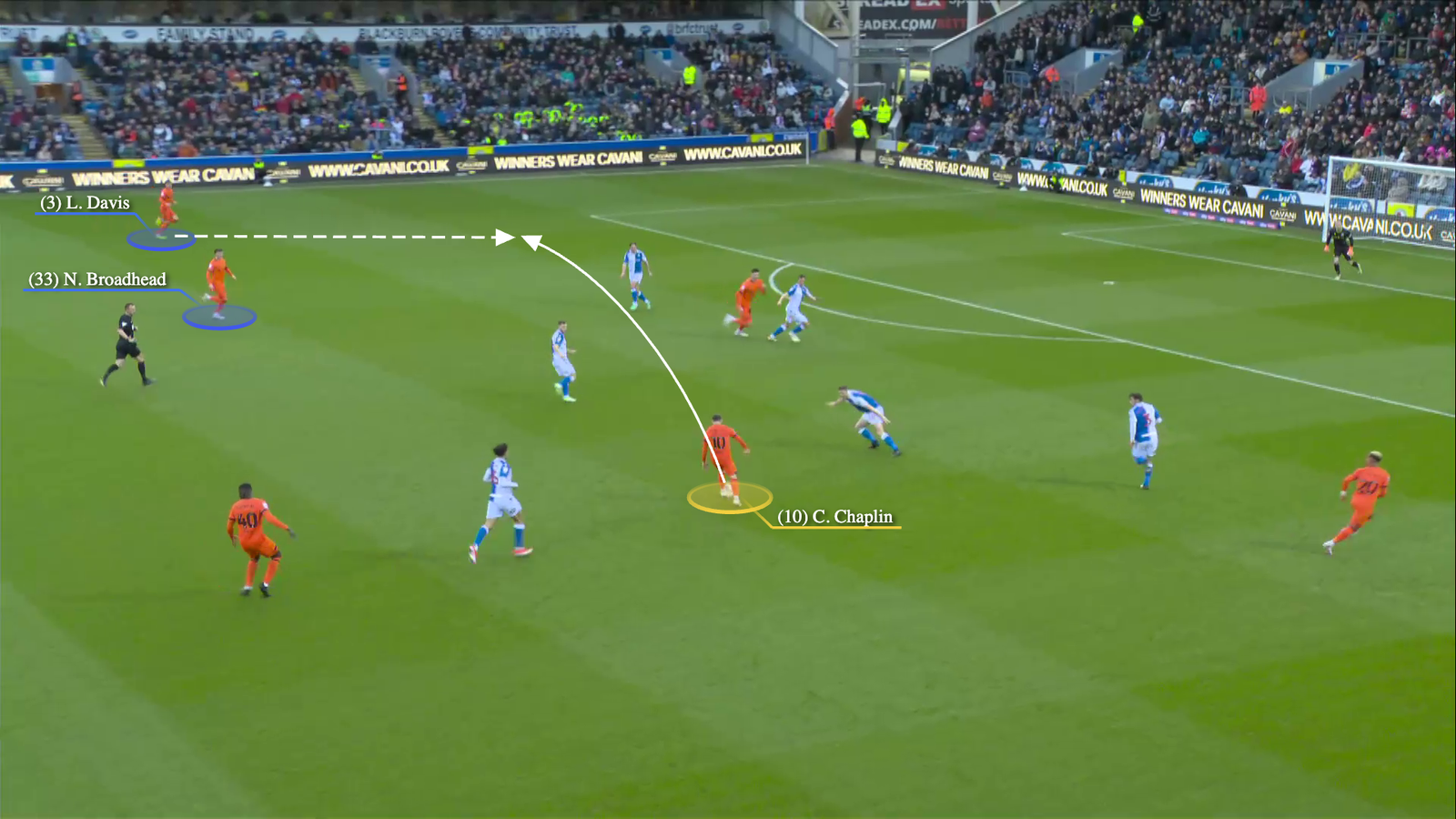
Broadhead’s forward dash creates a bigger space inside the penalty area by dragging Blackburn’s other central midfielder. Davis then returns the pass to Chaplin, who scores into the near bottom corner.

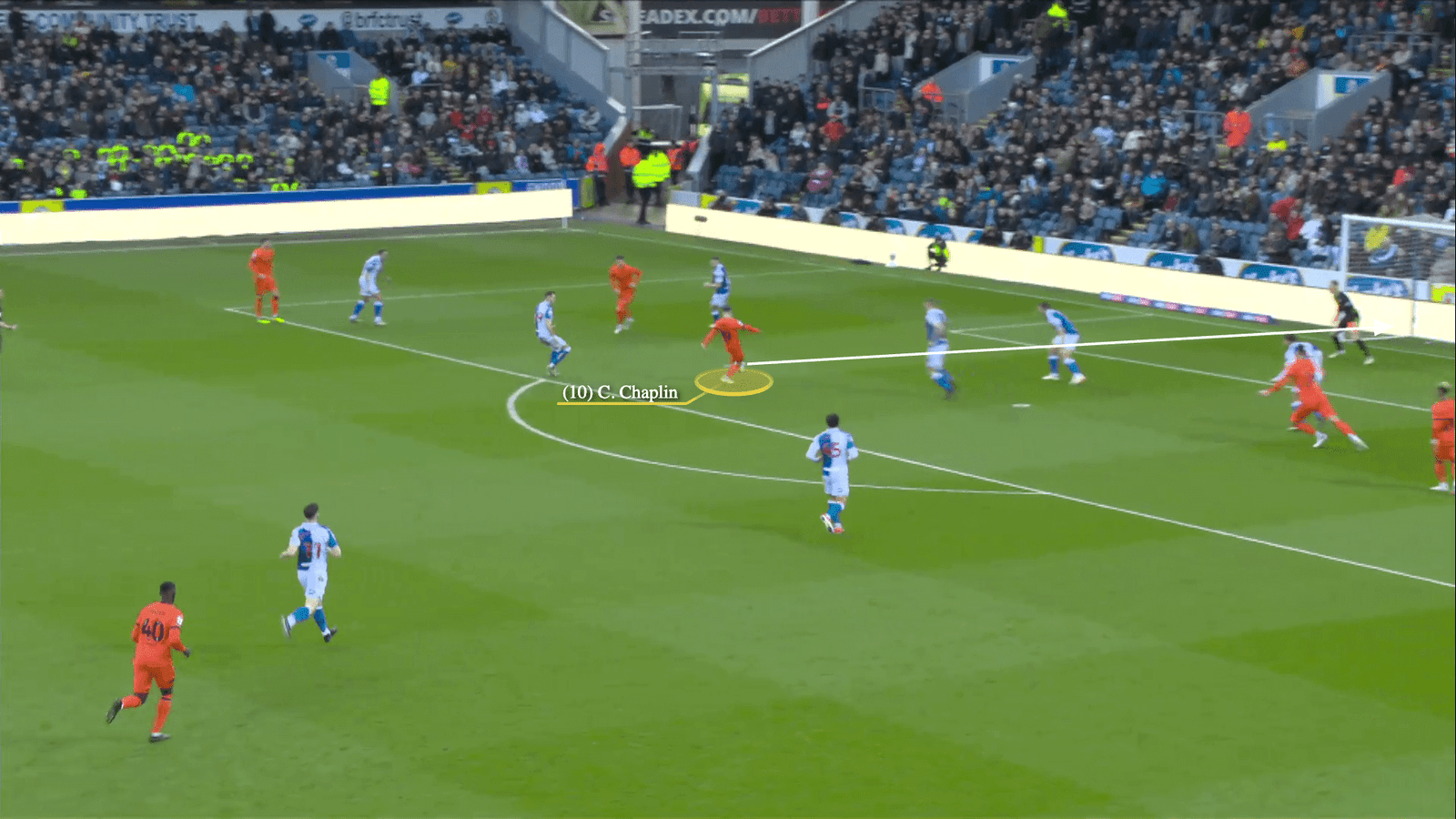
Davis’ surges down the left flank and his impressive set-piece delivery helped him rack up the highest number of assists (18) in the Championship last season.
Ipswich’s attacking approach means that Davis has a big part to play, and the role of the team’s left-winger allows him to be the main creative hub on the left side of the pitch.
“The way I play in the team is more advanced than a normal left-back. I don’t really have anyone in front of me, and I have got to do a lot on that side myself,” Davis told Sky Sports last November.
He also explained how McKenna improved his game defensively and offensively. “I didn’t think I had that quality in the final third, it wasn’t my strongest point, but now I would say it is,” said Davis.
“He has worked with me in training to be more comfortable with the ball at my feet in the final third, and to find passes instead of just getting it into the box and hoping for the best.”
McKenna’s game plan also allows Davis to attack the byline, helping him reach dangerous positions to execute cutbacks and create chances, as illustrated in the graphic below.
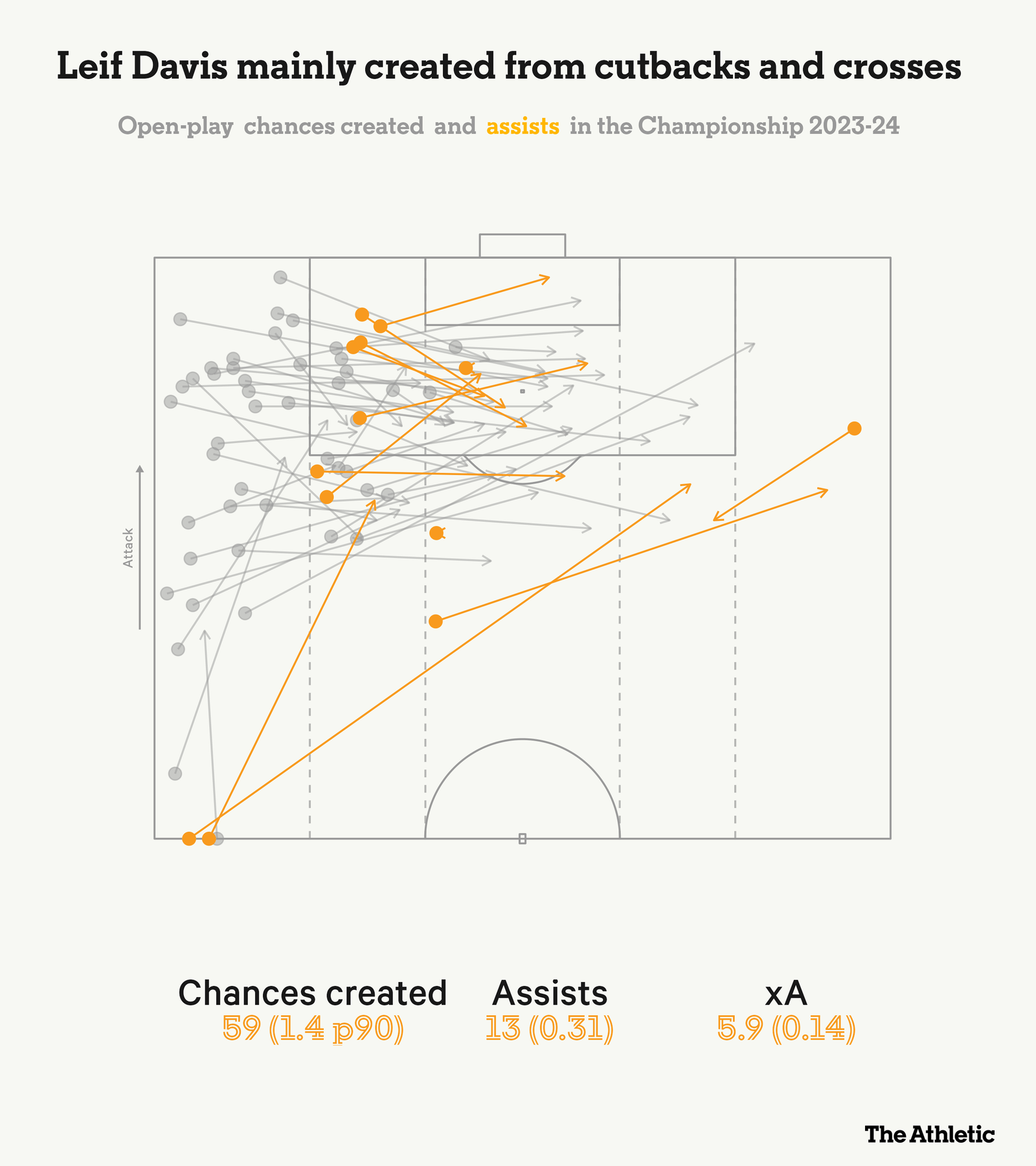
Ipswich constantly want to find Davis in advantageous situations, either by combining and finding his overlapping runs down the left side, or with long passes beyond the opposition’s defensive line.
In this example against Sheffield Wednesday last September, Luongo finds Davis’ run behind the defence…
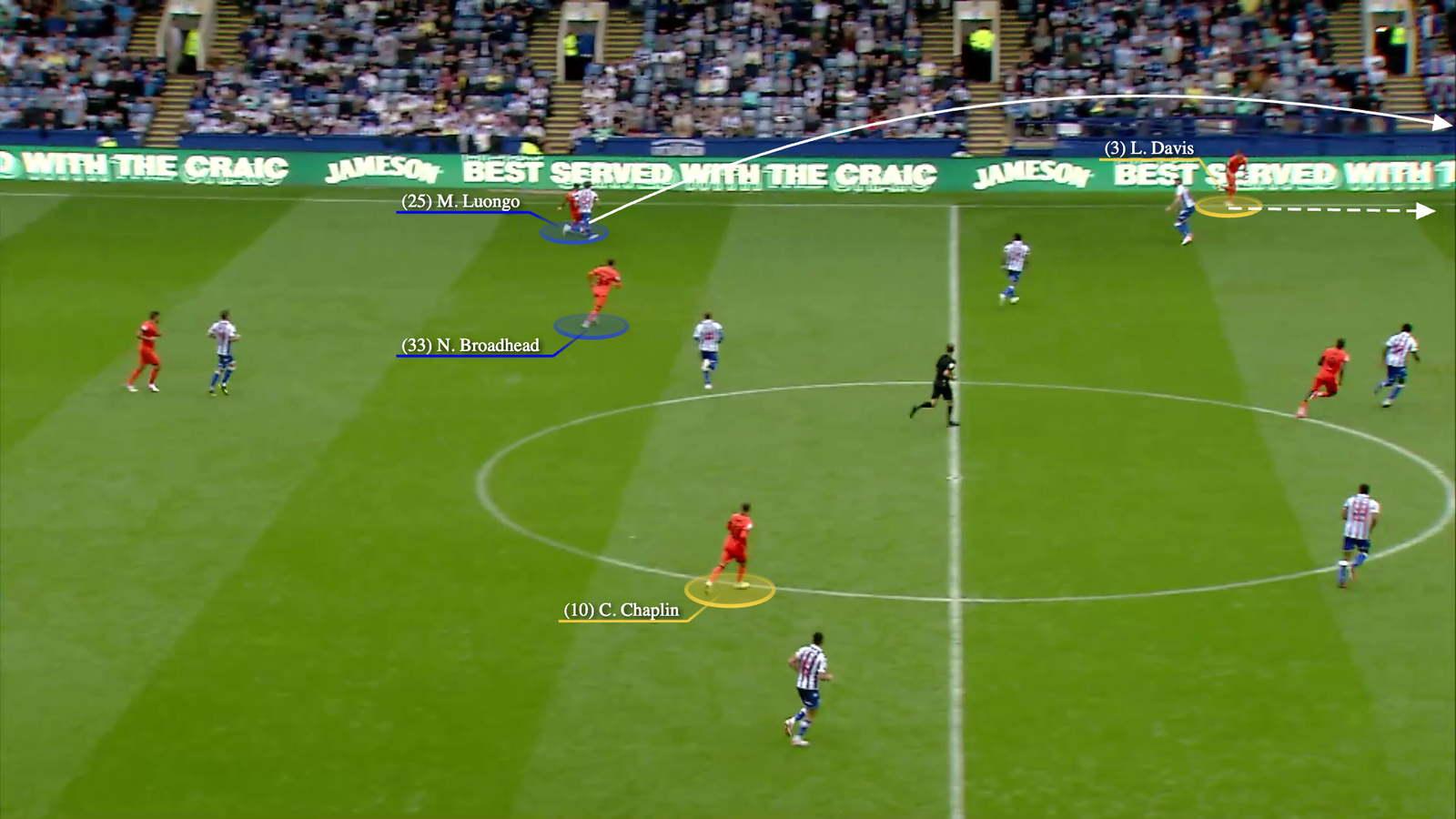
… and the left-back is provided with different options in attack to pick out from: Freddie Ladapo and Wes Burns are attacking the penalty area, while Chaplin is in position to receive the cutback behind them.
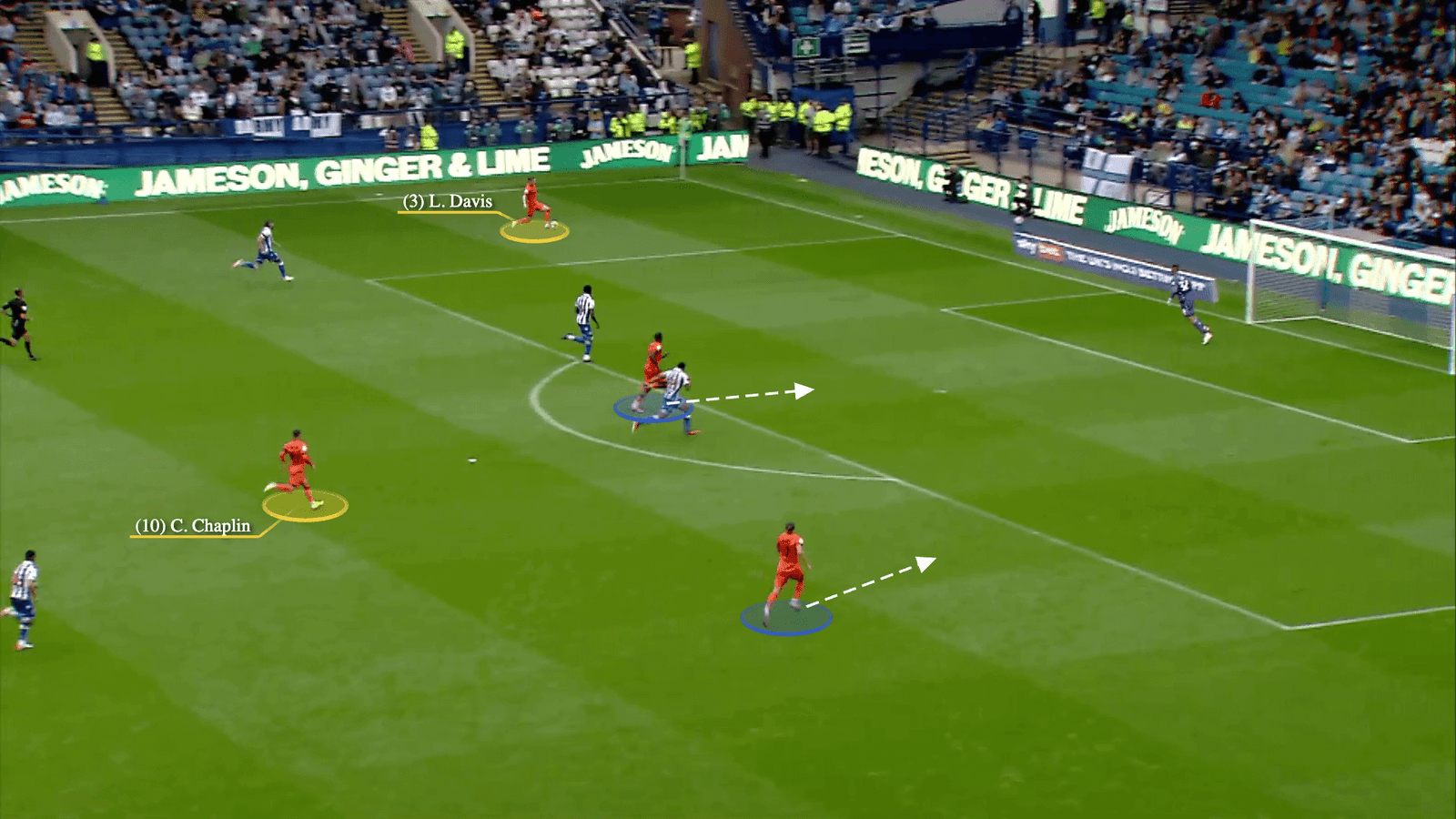
Ladapo and Burns’ movement forces Sheffield Wednesday’s defence to drop, and Davis finds Chaplin near the penalty spot…
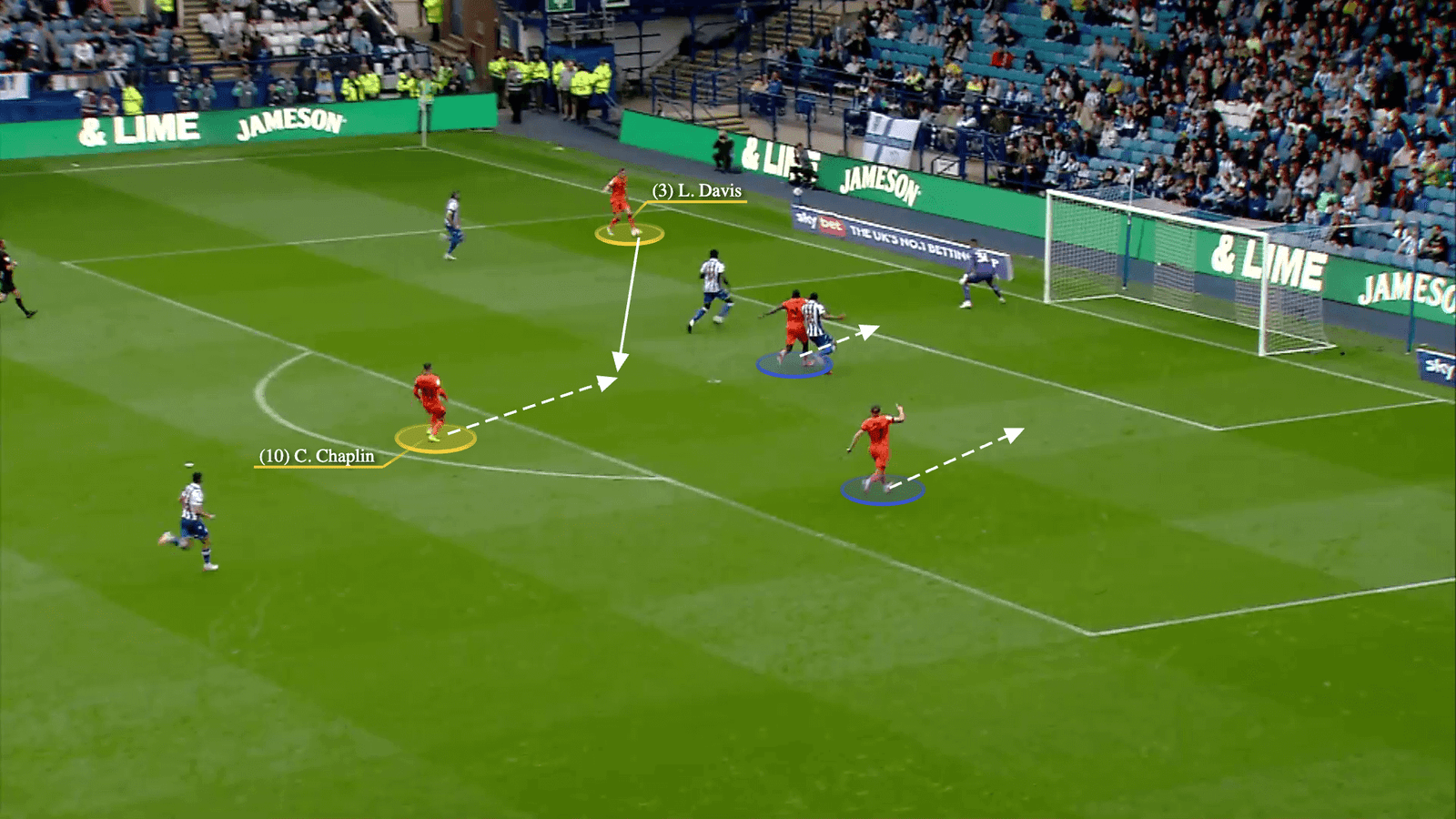
… for the midfielder to score the winner.

Five months later, Ipswich scored an almost identical goal away to Swansea City. Davis played the cutback into Chaplin, with Kieffer Moore’s movement towards the far post creating space for the midfielder, who scored yet another winner.
Cutbacks are one of Ipswich’s most important solutions in the final third. The positioning of Chaplin and the narrow left-winger offer cutback options, which are complemented by the movement of the centre-forward and Burns inside the penalty area.
Last season, Ipswich scored the second-most goals (10) from cutbacks in the Championship after Southampton (14). They also had the second-highest expected goals (xG) from cutback situations in the league, as illustrated in the graphic below.
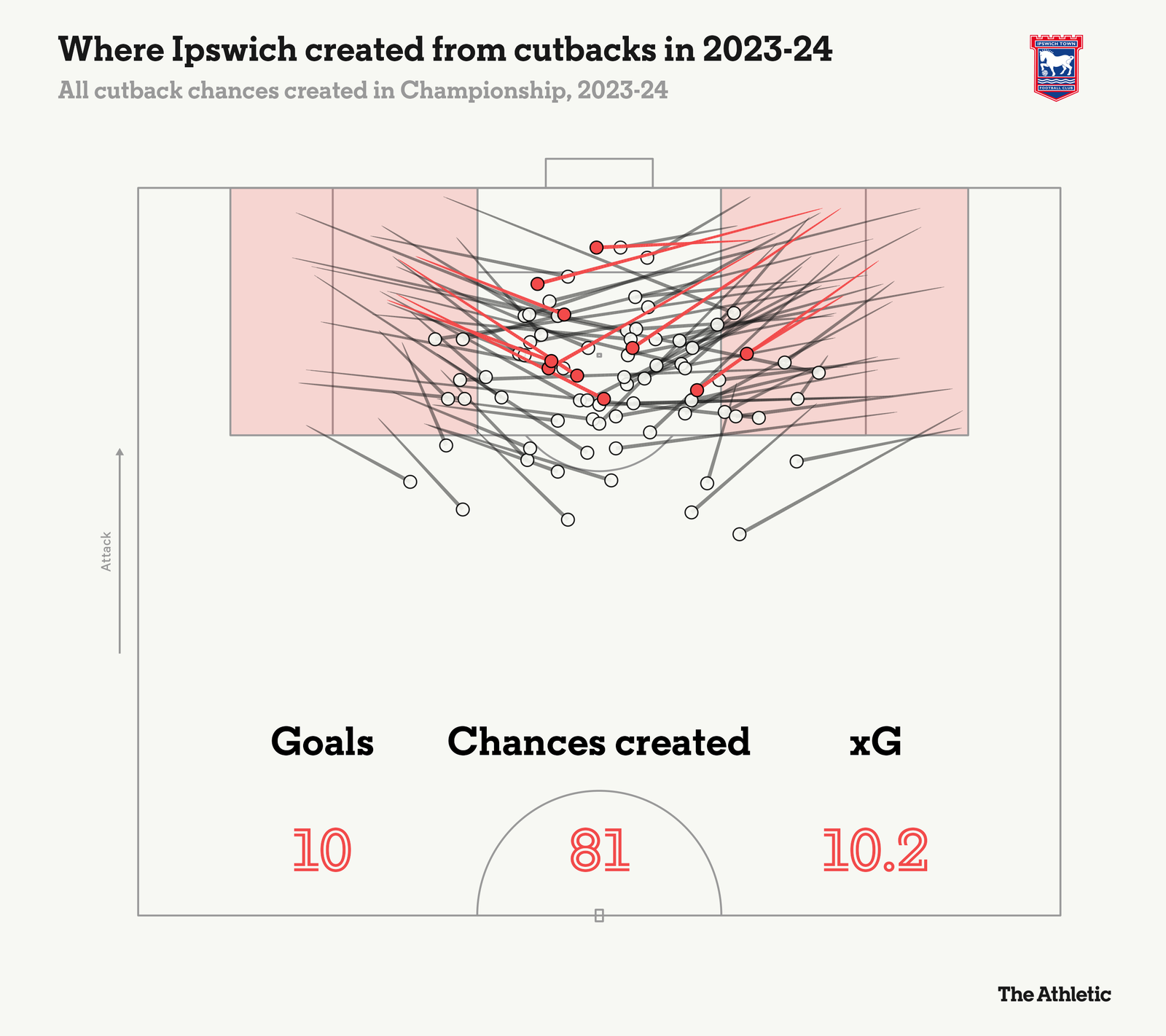
Another aspect of Ipswich’s game that should increase their hopes of success in the Premier League are their set pieces. Recent seasons have shown how important dead-ball situations are in the top flight. They can be the difference between survival and relegation.
Last season, Ipswich had an impressive set-piece record defensively and offensively. Measuring goals conceded per 100 set pieces creates a fair comparison across all teams, and McKenna’s team had the fourth-best rate (2.6) in the Championship last season.
Meanwhile, their 20 goals from set pieces meant they had the third-best goals-scored-per-100-set-pieces rate (5.1) in the league after Norwich and Cardiff City.
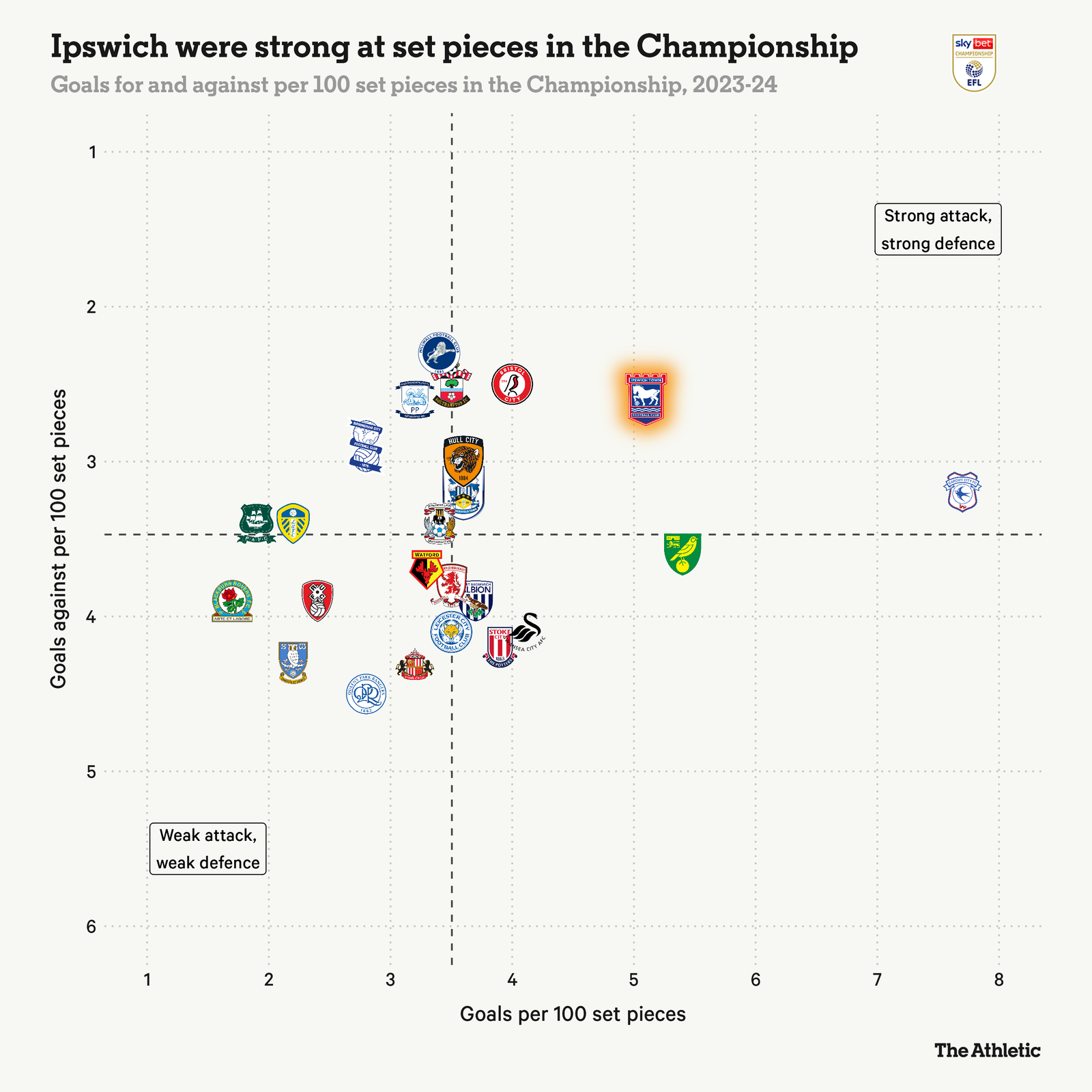
Off the ball, Ipswich can be proactive with their high pressing, an approach that mainly revolves around trapping the opponents in wide areas using their front four. The centre-forward’s main task during the press is to force the opponent’s centre-back to build through the full-back, with Chaplin marking the nearest midfielder and the Ipswich winger near the ball locking onto the opponent’s full-back.
Meanwhile, the far Ipswich winger moves inside to mark the opponent’s midfielder or be in a position to press the other centre-back. Here, Harness moves in-field from the left wing to help smother Hull City’s defence.
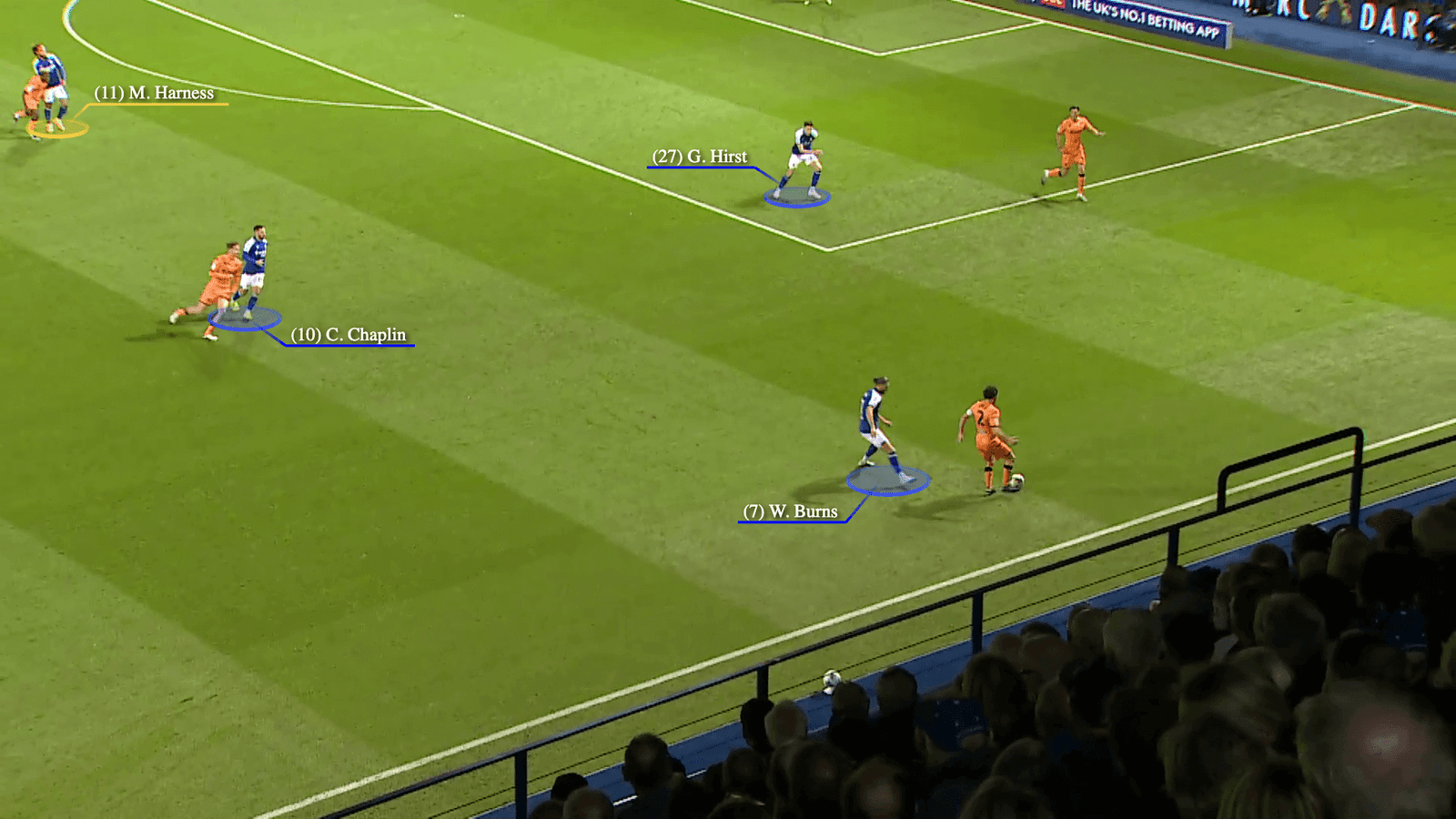
When the ball is moved to the other side, Ipswich’s right-winger, Burns, moves inside to be in a position to press the centre-back if needed.

The drawback of this pressing approach is that Ipswich’s press can be broken if the opponent quickly moves the ball to the other side or combines to find the free full-back. However, McKenna’s safety nets are Davis on the left side and midfielder Sam Morsy covering the right wing.
Captain Morsy’s proactiveness off the ball and his ability to win it back quickly solidifies the midfield alongside Luongo, strengthening Ipswich’s out-of-possession game. Last season, Ipswich conceded the fourth-lowest non-penalty xG per game (0.98) in the Championship, highlighting how their defensive organisation limits the opposition’s high-quality chances.
Defensively and offensively, the Premier League will be a much sterner test for this Ipswich side. Better pressing teams will not allow them as much time on the ball to combine through the thirds and more relentless attacking units will test their defensive solidity.
“We are going to have to adapt again,” said McKenna after securing a second promotion. “It’s a massive jump up and we will try to keep the best things of what we have and bring them to a completely different level.”
Read the full article here


